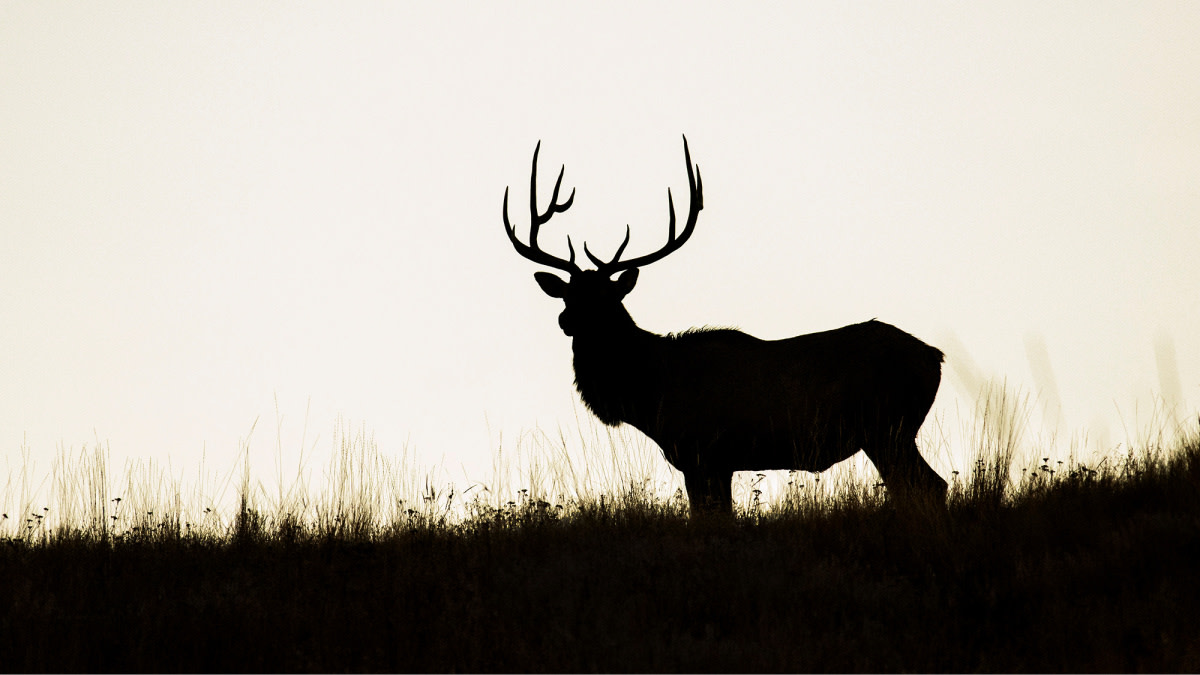
The third week of September coincides with the peak of the elk rut, when bulls are fighting, bugling, and chasing hot cows with reckless abandon. Last year, the timing was perfect for calling in an aggressive bull during Colorado’s muzzleloader season—unless you’re one of those hunters that swears a full moon shuts down or delays the elk rut.
I’ve killed elk during all moon phases, so I’ve never wasted much time on that line of thought. But I’ll admit, I was tempted to use the moon as an excuse for the lack of rutty elk activity throughout last year’s hunt.
Opening morning found me chasing around three different bugling bulls. No shots were fired, but things were looking good. That evening, a brilliant, full moon rose early and I didn’t need a headlamp for the hike back to camp. For the next several days, everything went dead quiet. No bulls bugling. No elk movement during daylight. And a bright, full moon each night. Had the moon somehow slowed or stopped rutting behavior?
The hunting was tough that week, but regardless of the moon phase, the elk rut happens at pretty much the same time every fall. Elk, and other ungulates, are programmed to breed at the same time every year for couple reasons that are tied to when their offspring are born. First, cows want to drop their calves each spring when the most succulent, nutritious forage is available to them for maximum milk production. Second, when the rut happens at the right time, the vast majority of cows are bred so that the vast majority of calves are dropped within a few days of each other. This is known as “predator swamping,” whereby bears, cougars, wolves, and coyotes are overwhelmed by the sheer number of newborn calves on the ground. They simply can’t eat them all before they’re up and running with the herd.
However, while the moon phase does not impact the annual timing of the elk rut, it may impact their daily behavior. Many hunters believe elk shut down during the day and engage in their romantic activities at night during a full moon. There’s no concrete evidence that this is some sort of universal truth, but I decided to do a nocturnal scouting mission after three fruitless days of hunting. I dragged myself out of my sleeping bag around midnight and hiked to the edge of my hunting area. Sure enough, bulls were bugling like crazy out there in the middle of the night. I can only presume they were chasing cows around and breeding, too.
Still, it’s impossible account for this behavior based solely on the moon phase. Daytime temperatures that week were in the 80s by 10 a.m. That’s bad enough for a person hiking around in the mountains, let alone a 700-pound elk wearing a winter coat. Nighttime temps were much more comfortable. Increased hunting pressure could also have played a role. A sudden influx of muzzleloader hunters isn’t something elk are likely to ignore. Wherever and whenever critters are feeling hunting pressure, they tend to go nocturnal.
After going several days without hearing a bugle during the day, the switch flipped. At first light on day six, bugles rang out everywhere. I snuck in between two bulls, called one of them into 7 yards, and dropped him in his tracks. Yes, the moon had been noticeably dimmer than previous nights. But then again, it could have been that a few new cows had gone into estrus or elk got more excited as temps dropped 20 degrees. And most of the other hunters in the area had packed it in after a few days of tough hunting. Full moon or not, you can’t kill an elk from the couch.
Feature image via John Hafner.







